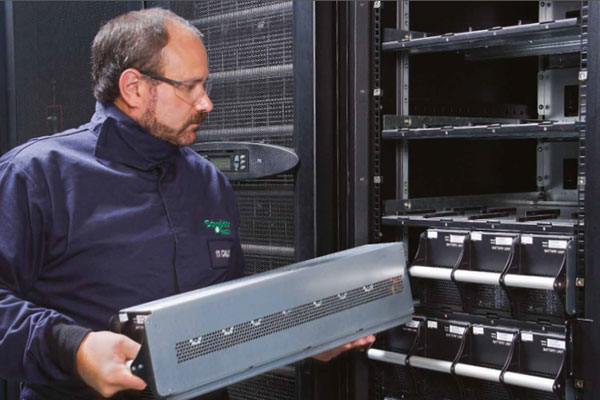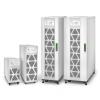UPS battery calibration & self-test

Learn why, when and how to perform a UPS battery calibration or UPS battery self-test and what the difference is.
UPS Battery Self-Test
Automated Battery Self-Testing
On most UPS models a battery self-test is a default setting. A new unit with self-test capability will automatically run a self-test on start-up and then run periodic tests on a set schedule, often every 14 days by default.
During the test, the UPS will place the load onto battery power to test the strength of the battery. You will be alerted if there’s a weak battery status that would put the load at risk in the event of an extended outage.
Manual Battery Self-Testing
You can also perform a manual self-test. You would normally do this after a battery swap. It’s best to wait 24 hours after swapping the batteries to allow them to fully charge before performing the self-test.
Notifications & Scheduling
Notification of the test results will appear on the UPS display and you will receive an alert via Email if a network management card is installed and you have set-up notifications.
If you do have a network management card allowing you to access management software for the unit, you can also adjust the periodic schedule of the automated self-tests if the default setting isn’t appropriate for your circumstances.
UPS Battery Calibration
A UPS Battery Calibration is an important process that should be performed yearly to maximise the longevity of your UPS and battery investment and to ensure the best performance of your back up system in the event of an outage.
How It Works
During calibration, the load (your IT equipment) is switched across to mains power while the UPS batteries are discharged and then charged back up. This helps to extend the battery runtime and overall lifespan. It also allows the UPS to recalibrate and give a very accurate run-time reading.
Accurate Run-Time Reading
Having an accurate reading is important so you can understand what your run-time will allow you to do prior to system shut-down in the event of an outage. With an accurate run-time reading, you can plan for an extended outage and put procedures in places to perform an automated or manual shutdown to avoid data or equipment loss or damage.
Scheduling UPS Battery Calibration
Timing is important with battery calibration. If done more than once a year, you may shorten the battery life. If the battery sits dormant for extended periods it will lose capacity and won’t provide availability when needed.
We recommend performing Battery Calibration as part of an annual Major UPS Maintenance. Because you will need to switch the load to bypass power and because of the technical nature of this process, we recommend scheduling during off-peak hours. It is essential this work is done by a qualified expert.
An important note on testing and calibration
All environments are different. We recommend you speak to a technical specialist before performing any testing or calibration of a critical power device to minimise risk to the load and to untrained staff.
To learn more get in touch at sales@bdcservices or 1300 00 11 95













Comments